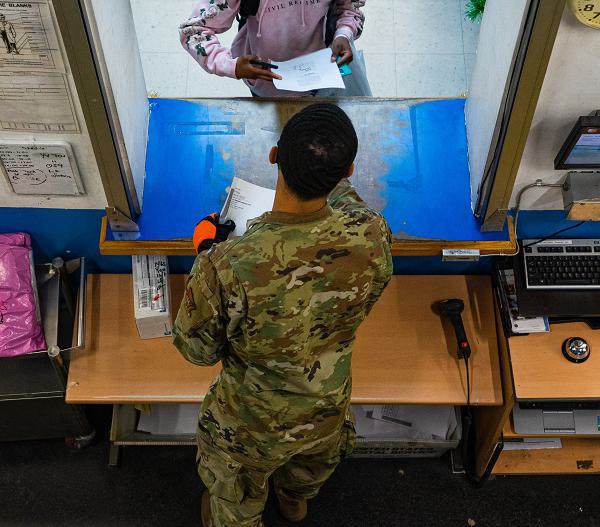
Osan Air Base Post Office, South Korea. (October 14, 2024): Forget Taylor Swift, in most units the battalion mail clerk is the most popular person and the most sought after. In this photo by 1st Lieutenant Daniel de La Fé, Airman 1st Class Damon Thompson, 51st Force Support Squadron postal clerk, helps a fellow Airman with an oversized package.
In many military units, postal clerks walk the base personally handing out the mail. This makes the Postal Clerk the most popular troop in the unit. Postal Clerks learned, through sheer repetition, everyone’s name in the battalion. Their arrival meant hope for mail from home or disappointment when it didn’t.
In the U.S., all mail services are consolidated under the Military Postal Services Agency or MPSA. The MPSA coordinates with the civilian U.S. Postal Service to oversee all military mail. The system is subsidized to ensure that military mail does not cost the sender any more than normal domestic mail. In some cases, military personnel in a combat zone may post letters and packages to their home country free of charge.
The individual military services (Army, Marine Corps, Navy, Air Force, Coast Guard) are each, themselves, responsible for the costs, manpower, and facilities for mail that travels through their department. The Army or Air Force use the city abbreviation APO (Army Post Office or Air Force Post Office), while Navy, Marine Corps, and Coast Guard use the city abbreviation FPO (Fleet Post Office). Collectively, the military moves mail into and out of than eighty-five countries.


